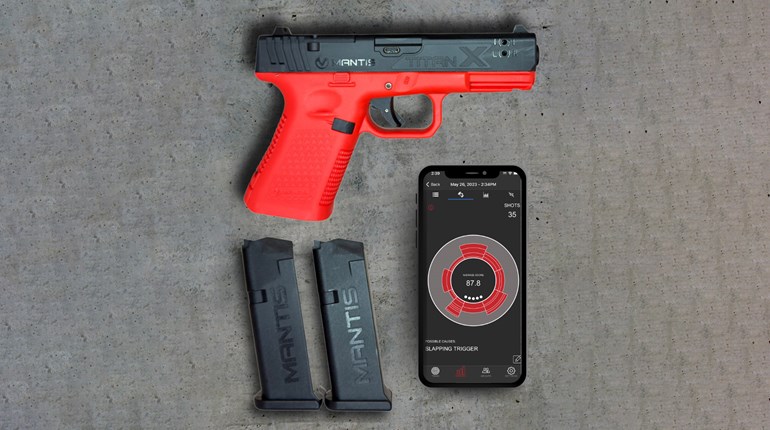
The near-and-far drill teaches you to slow down and speed up as dictated by target distance.
Under stress, even well-trained shooters have a tendency to squeeze the trigger as fast as possible, regardless of the distance to the target. When they transition from a close target to one substantially farther away, they shoot too fast and often miss. Conversely, when transitioning from a far target to one much closer, the tendency is to not shoot as fast as you should.
For the near-and-far drill, set one target at about 7 yards and another at 20 yards. Do not separate the targets laterally; you're not trying to measure your ability to traverse from side to side. What you want to evaluate is your ability to shoot at a close distance and then at a much farther distance with speed and precision. As you perfect the distance transition, you can spread the targets farther apart to work on lateral shift.
To conduct the drill, draw your handgun and engage the closest target with two shots. Then fire two shots at the far target, and immediately transition back to the close target, firing two more shots. Your goal is to get six hits, accurately firing the second shot at each target as soon as possible after the first.
The total time it takes to complete this drill with no misses is important, but not as important as learning to slow down on the far target and speed up when you transition back to the near target. A good time for six hits is less than 6 seconds; between 6 and 8 seconds is average, and anything more than 10 seconds means some folks load magazines faster than you shoot.
Whether you are looking to improve your performance in practical shooting matches or better develop your defensive handgun skills, being able to transition between targets at radically different distances, with speed and accuracy, is a good skill to have. In matches, targets are rarely at the same distance in each stage, and in real life, bad guys don't make a habit out of standing still when you're shooting at them.





































